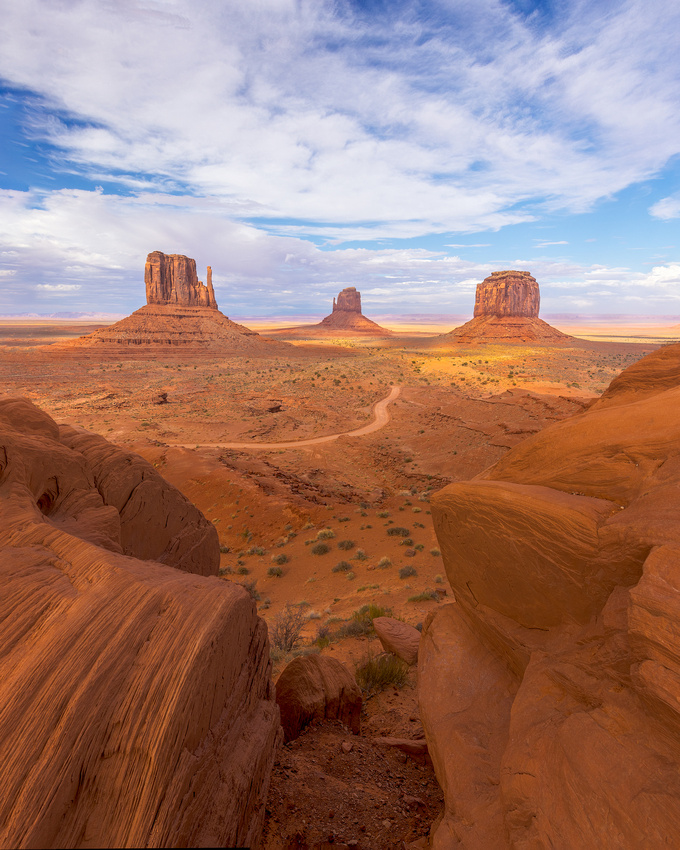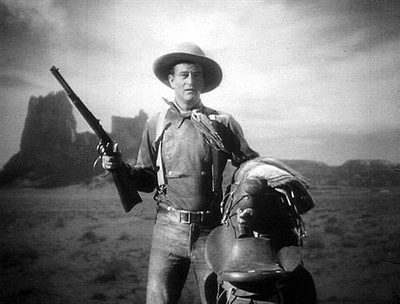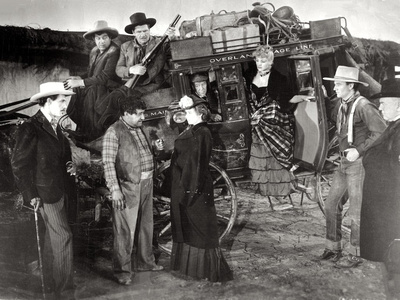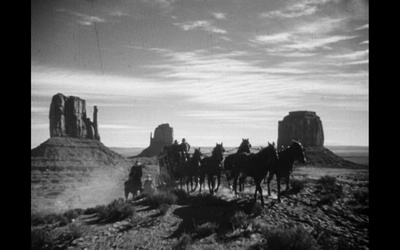Best Laid Plans...


I was supposed to be chasing tornados in the upper Great Plains last week. But landscape photography doesn’t always go according to plan.
When I woke up in Denver on June 26th, it was only 47 degrees! A cold front was parked over the Plains that would eliminate any chance of severe weather for almost two weeks. So, what to do?
Luckily, warm, moist air from the southeast was flowing into Arizona and New Mexico. That meant short-lived, isolated monsoon storms were possible. And they might form over some of the more scenic areas in the region, including the Grand Canyon.
We piled into our van and headed 500 miles south to Monument Valley. The weather models looked promising for storms at one of the most photogenic sites on the planet.
Monument Valley
Why is it photogenic? Monument Valley (Tsé Biiʼ Ndzisgaii, meaning valley of the rocks) is on the Navajo reservation on the Utah/Nevada border. The location was burned into several generations of moviegoers beginning with Director John Ford’s 1939 masterpiece, Stagecoach.
Stagecoach brought together 47-year-old Ford and a 32-year-old B-movie actor by the name of John Wayne in his first lead role. Stagecoach was the beginning of a collaboration that would pair each other’s talents for two decades.


Stagecoach may seem formulaic to today’s moviegoers. But it was the first “Ark Movie” where a mixed bag of characters are thrown together by chance and forced to survive an ordeal. The movie is so well made that Orson Welles watched Stagecoach 40 times before he made Citizen Kane.
Top billing went to Claire Trevor, as Dallas, a lady of pleasure. John Wayne, the other lead, plays The Ringo Kid, a wanted murderer being taken to prison by a U.S. Marshall (George Bancroft).
Andy Devine is the driver, John Carradine is the elegant gambler, Thomas Mitchell is the alcoholic Doc Boone, Louise Platt is the pregnant soldier's wife, and Donald Meek is the effeminate traveling salesman.
Confined inside the stagecoach for most of the film, these gifted actors create a fascinating community. Gradually, their hidden reasons for traveling in great discomfort through hazardous Indian territory become clear.


The backdrop to the story is the impressive scenery of Monument Valley. Ford filmed much of the movie on location. It became a favorite of his and he returned again and again to film there.


The film’s attitude towards Native Americans is unenlightened. Only in Ford’s final 1964 film, Cheyenne Autumn, did he come around to a more humane point of view.
The Shot
Despite a great forecast by our tour leader, a storm never quite formed over Monument Valley. I had to be content lining up the major features (East Mitten Butte, West Mitten Butte, and Merrick’s Butte) under a partly cloudy sky and create a memory.
Perhaps I’ll make it back there some day for that photogenic storm over the Valley.
I’ll be back out in the field over the next two weeks, so no Friday Photo until July 29th.
Thanks for looking,
Chuck Derus
Comments
I'm writing on meteors and the starry night for amateurs in the Netherlands.
Can you grant me permission to illustrate it with your nice picure of the Geminids (2022), APOD picture?
Of course I'll mention you as the author!
Best regards,
Mat